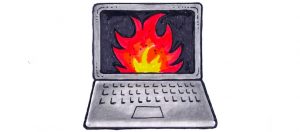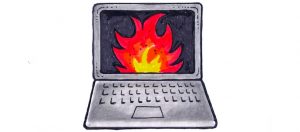Sadly representative of the federal and local response to coronavirus: too little and far too late.
By Russ Barkan
The Guardian (4/3/20
The USNS Comfort, the navy hospital ship deployed to New York City this week, was supposed to house 1,000 patients. Instead, it’s taken in only 20, refusing to accept New Yorkers suffering with coronavirus.
Sitting on idle on the Hudson River, the ship is quickly becoming a symbol of all that has gone horrifically wrong with both the federal and local response to the Covid-19 outbreak. There are about 50,000 confirmed coronavirus cases in New York City alone, with more than a thousand dead. Many, with the right course of action, could have been prevented.
Donald Trump, who has bumbled through every conceivable facet of preparation for this once-in-a-century pandemic, saw off the ship in Virginia to much fanfare. Bill de Blasio, the mayor of New York City, and Andrew Cuomo, the governor of New York, greeted it upon arrival. But military and bureaucratic hurdles have prevented the Comfort from accepting most patients.
Strict rules are preventing people infected with the virus from coming on board. The navy is also refusing to treat a host of other conditions. Guidelines sent to hospitals included a list of 49 medical conditions that would exclude a patient from admittance to the ship.
Ambulances cannot take patients directly to the Comfort. First, they must deliver patients to a city hospital to be tested for the virus and then pick them up again for transport to the ship. Hospital leaders rightfully find the delays untenable.
In New York City, hospitals are besieged. Patients are dying in hallways. Refrigerated trucks are now makeshift morgues. Doctors and nurses are forced to reuse protective gear, some even donning trash bags. The city is running dangerously low on ventilators and even body bags.
Strict rules are preventing people infected with the virus from coming on board. The navy is also refusing to treat a host of other conditions. Guidelines sent to hospitals included a list of 49 medical conditions that would exclude a patient from admittance to the ship.
Ambulances cannot take patients directly to the Comfort. First, they must deliver patients to a city hospital to be tested for the virus and then pick them up again for transport to the ship. Hospital leaders rightfully find the delays untenable.
In New York City, hospitals are besieged. Patients are dying in hallways. Refrigerated trucks are now makeshift morgues. Doctors and nurses are forced to reuse protective gear, some even donning trash bags. The city is running dangerously low on ventilators and even body bags. …
*****
“Adrenaline, Duty, And Fear”: Inside A New York Hospital Confronting The Coronavirus
Amid an onslaught of cases, we are preparing for an even greater deluge.
By Dhruv Khullar
The New Yorker (4/3/20)
Right now, the most striking feature of the hospital might be the difference between the world outside and the world within. Outside, New York—America’s largest and densest city—is a ghost town. Manhattan’s streets are deserted. Its car horns are silent. Its halal carts have vanished.
Inside, the hospital pulses with an energy I’ve never experienced before. The destruction wrought by the novel coronavirus is on full display, but so is the singular purpose with which clinicians of all ranks and backgrounds are responding. I have never seen new protocols adopted so quickly. Medical students are graduating early to help in the fight. Pathology residents are volunteering on the medical floors. There is a complete subjugation of ego; senior physicians are performing tasks that they haven’t done since medical school. Medicine—normally governed by rigid hierarchies and siloed fiefdoms—is free.
I am nagged by a constant fear that a patient who otherwise would have been saved, on any hour of any day before this pandemic, will die today.
Medical militia
Arrive and security greets you with a mask on and a mask, for you, in hand. The message is unmistakable. A medical militia is at work.
I don’t want to overstate things. There’s a buffer zone. In the morning, I enter through a large atrium that once teemed with activity; it now has the feeling of an empty train station at midnight. I walk down a main hallway alone, glancing at plaques and paintings I’d never noticed before, and arrive at an idle information desk. To my left, an Au Bon Pain sits empty. To my right, rows of tables and chairs rest untouched.
I wait at an elevator bay. In months past, a car might have taken minutes to arrive, stopping at each floor during its long descent. Often, a crowd would have formed, and I’d have to wait for the next one. Now the doors open as soon as my gloved knuckle grazes the button. Inside, it’s just me and a doctor I vaguely recognize. Months ago, we consulted on a mutual patient. We nod in acknowledgement—an elbow tap too risky, a fist bump unthinkable. …
New Yorker Guide To The Coronavirus
- How to practice social distancing, from responding to a sick housemate to the pros and cons of ordering food.
- How people cope and create new customs amid a pandemic.
- What it means to contain and mitigate the coronavirus outbreak.
- How much of the world is likely to be quarantined?
- Donald Trump in the time of coronavirus.
- The coronavirus is likely to spread for more than a year before a vaccine could be widely available.
- We are all irrational panic shoppers.
- The strange terror of watching the coronavirus take Rome.
- How pandemics change history.


